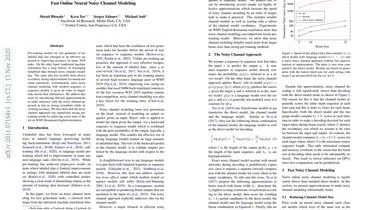MK-SQuIT: Synthesizing Questions using Iterative Template-filling
The aim of this work is to create a framework for synthetically generating question/query pairs with as little human input as possible. These datasets can be used to train machine translation systems to convert natural language questions into queries, a useful tool that could allow for more natural access to database information… Existing methods of dataset generation require human input that scales linearly with the size of the dataset, resulting in small datasets. Aside from a short initial configuration task, […]
Read more




